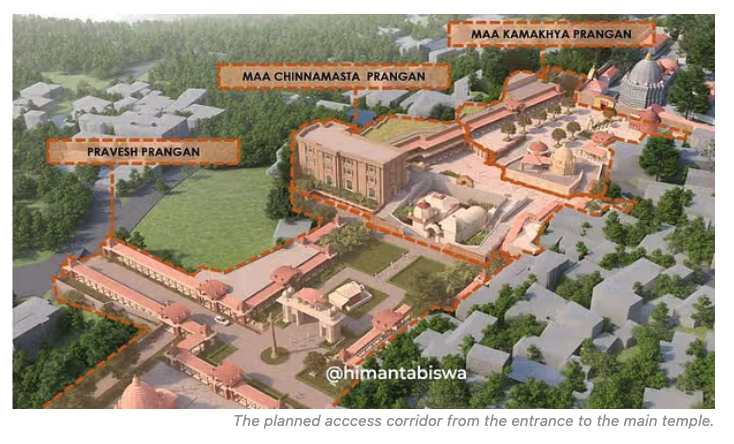INDIA, January 29, 2025 (Swarajya): The Maa Kamakhya Kshetram in Assam is a spiritual site of devotion and historical importance, drawing millions of pilgrims annually. Perched atop the Nilachal Hills in Guwahati, this ancient Shakti Peetha is a sacred center of mysticism, associated with the worship of Goddess Kamakhya and Dasha Mahavidyas — a group of 10 Goddesses in the Kaula marg of the tantric tradition. For years, there have been calls to modernize the temple’s surroundings, create better infrastructure, and turn the region into a world-class pilgrimage and tourism destination. The Maa Kamakhya Access Corridor, or Maa Kamakhya Divyalok Pariyojana, is an ambitious project aimed at improving accessibility, facilities, and the overall experience for devotees, similar to the Kashi and Mahakal corridors in Uttar Pradesh and Madhya Pradesh, respectively. By improving infrastructure and increasing the space and capacity, the project will help accommodate 8,000-10,000 pilgrims, especially during peak events like the Ambubachi Mela, thereby enhancing the overall pilgrimage experience and easing crowd management at this revered site.
However, the vision is now caught in a web of controversies, environmental concerns, and local resistance. What started as a dream of a modern temple gateway now stands at a crossroads. On paper, the Maa Kamakhya Corridor project was a masterstroke in blending spiritual heritage with modern development. However, the path to progress turned bumpy. The first major hurdle came from environmental and spiritual concerns. Assam, with its lush landscapes, endangered species, and delicate ecosystems, is not the place for unchecked development. The Nilachal Hills, where the Kamakhya Temple is situated, is a sensitive ecological zone. Environmentalists have raised alarm bells about the potential for deforestation, habitat loss, and pollution as a result of the corridor’s proposed infrastructure. Indigenous communities in Assam, whose livelihoods and culture are deeply connected to the land, have also voiced strong opposition. They fear the project will prioritize commercial interests, displace local populations, and erode their cultural heritage. It’s not about whether the corridor should be built, but rather, how it should be built — thoughtfully, respectfully, and in alignment with the deeper purpose of the temple.
Much more at source.
https://swarajyamag.com/infrastructure/a-temple-a-corridor-and-a-controversy-why-the-kamakhya-project-is-at-a-crossroads
A daily summary of world news for Hindus and non-Hindus alike

